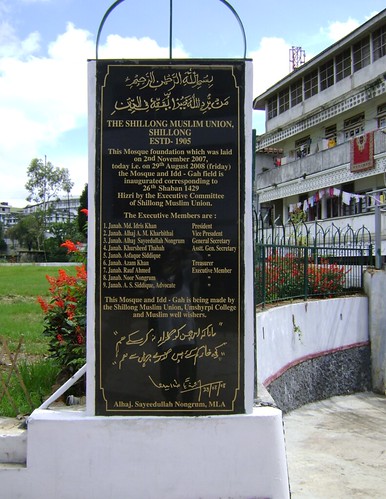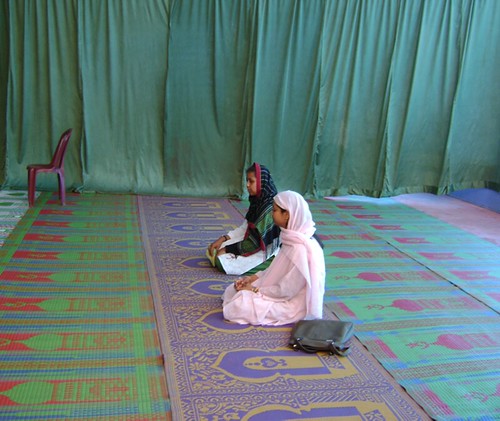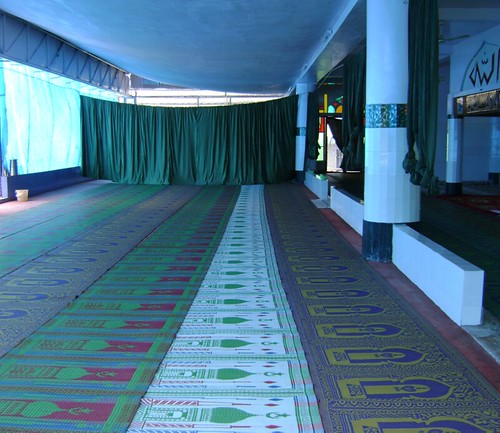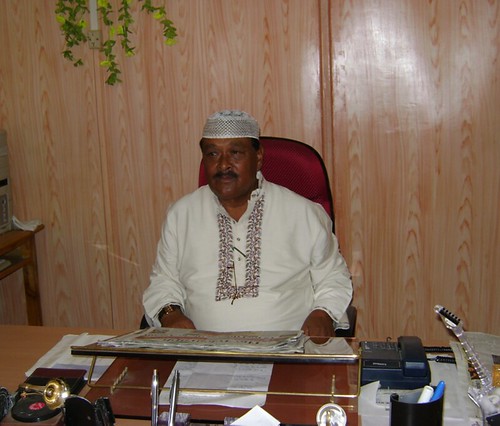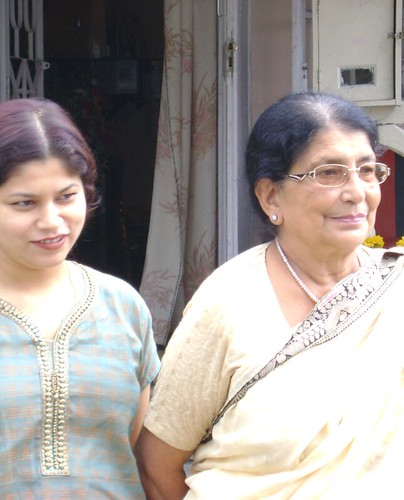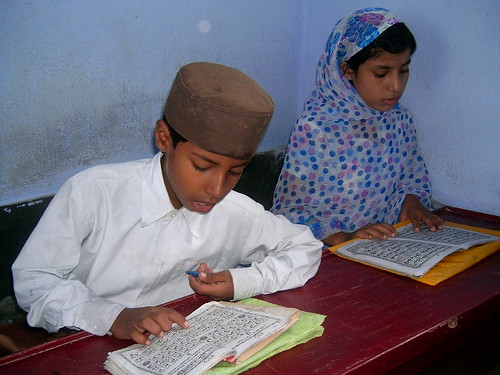By Tarique Anwar and Mudassir Rizwan, TwoCircles.net,
Patna: Slight drop in the water level of Kosi River which swallowed nearly 100 people, as per official figure, and displaced lakhs of others, raised a ray of hope among the survivors of a sort of tsunami in North Bihar.
The water level of Kosi and its tributaries have descended in Madhepura, Purnia, Araria, Supaul and Saharsa districts of north Bihar in the last 24 hours as water level went down by 1-3 feet. These districts have been badly affected by the sudden and unprecedented flood. Now the Army is becoming successful in reaching remote villages of the districts to rescue the stranded people.
In Madhepura flood situation has reportedly improved up to a great extent in 22 blocks of the district. More than 10 lakh people in Kumar Khand, Shankarpur, Murliganj, Ada Shankarpur, Madhepura Sadar, Gowalpara, Bahadurganj, Chausa, Alam Nagar blocks of the district are affected with the flood.
Despite decrease in water level still 2-3 feet water is running inside Madhepura town. Rescue operation is being carried out at war level with collaboration of district administration and Army in the district. Army helicopters are dropping necessary items along with food packets in the areas. People are being brought to safety in large numbers with the help of motor boats. Although more than 40 thousands of people are believed to be trapped in Madhepura district alone.
In Supaul five blocks are facing destruction caused by this devastating flood brought by Kosi River. The district administration is conducting relief operation with the help of many organizations and 2.25 lakh people have been rescued so far. More than 9 lakh people are affected by the flood. About 43 relief camps have been set up in flood affected areas.
Chief Secretary, Emergency Management Department, Raj Kumar Singh said the state was equipped to rescue 50,000 people a day and was confident of accomplishing the goal of saving all the marooned people within next three days, barring any unexpected change in the situation.
Talking to TwoCircles.net Wasi Ahmad, a health official in government of Bihar and who is actively participating in relief works in Saharsa district, said the district has never witnessed flood like this before. Nearly 70-80 lakh people are badly affected in these districts. Relief works operated by the government are not sufficient. A large section of the trapped survivors are still not getting food, clothing, drinking water and medicines. Aerial dropping is not proving very much fruitful. “We have only received 1 lakh litre mineral water, small amount of food packets and some medicines so far after arrival of the Prime Minister Manmohan Singh”.
He confirmed that many social and religious organizations like Imarat Shariah, Idara Shariah, Jamiat Ulama-i-Hind, Jamaat-e-Islami Hind, Aman, Himalaya Kalyan Sanstha are devotedly serving the people and providing food packets, cloths, drinking water, medicines to the people trapped in the flood.
According to the latest media reports the catastrophe has created massive loss of lives, displacement of millions of people, damage of millions of hectare of standing crops, acute scarcity of drinking water especially in submerged areas, total destruction of food stocks/houses, and much more.
The districts most affected are Supaul, Madhepura, Purnia, Khagaria, Araria, Saharsa, Bhagalpur, Katihar, etc. Over 40 lakhs (4 million) people are affected and uprooted leaving their homes, property, animals, families, and everything in the districts of Supaul. Madhepura is most affected district where 11 out of 13 blocks including Madhepura town have been under 6-ft deep water. Roads, highways, rail tracks are all submerged and damaged. Therefore, the boats remain to be the only means to rescue the people, but the government has not adequate number of boats.
Those who have somehow saved their lives or been rescued are staying at nearest dry places: railway stations, school building, other such public places.
Grassroots India Trust, Labour League Foundation, SEWA and SEDEM in collaboration of several other organizations of Delhi and Bihar have decided to contribute in relief, rehabilitation and reconstruction process in Bihar. They have formed two teams of committed social development workers and volunteers for delivering the relief material to the flood victims wherever they have been staying at the moment. Their national team based at Delhi coordinates the relief work and fundraising, while the state team executes the actual relief work.
In first stage, their relief work includes quick delivery of food, temporary shelter and medicines to the flood victims. In the second stage, they will support flood victims in rehabilitation and reconstruction works.
It has appealed all the concerned to contribute as much as possible in this difficult time for people of Bihar.
Some of the organizations actively involved in flood relief operation can be contributed as follows:
Idara Shariah
Idara Shariah Relief Fund A/C No. 1045
Central Bank, Muradpur Branch, Patna
Adress for sending cheque : Nazim Aala, Idara Shariah, Ashok Raj Path, Patna-6
Phone numbers: 0933 402 4022, 0930 451 4097
Aman Foundation, Purnea
Punjab National Bank, Patna Bihar (India)
Account No.-2968000101004418
Society Pan No. - AACTAO186F
Address- Mazaffaruzzman (Secretry)
Correspondence & Admistrative office
Mohammadia House, Sajjad Colony, Khazanchi Hat,
Purnea, Bihar (India) 854301
Contact No. 9934684786, 9431284786, 9431864835, 9771712372
E-Mail: foundation.aman@gmail.com
Imarat Shariah
Cheque or draft in favour of Baitul Mal Imarat Shariah, Patna.
Address: Imarat Shariah Phulwari Sharif Patna- 801505
Phone numbers: 0612- 2555668, 2555014, 2555351.
Fax: 0612- 2555280
Jamiat Ulama-i-Hind
Draft, cheque or monery order in favour of Jamiat Relief Committee, Bihar
Adress: General Secretary, Jamiatul Ulama-e-Hind, Bihar, Jharkhand
Madani Musafirkhana, Patna Junction, Patna -01
Phone Numbers: 0612-2219525, 0943 100 9514
Grassroots India Trust/Labour League Foundation/SEWA
In Cash/Kind:
Deposit at Our Collection Centres in Delhi, Chandigarh, Shimla
By Cheque (from India):
Drawn in favour of GRASSROOTS INDIA TRUST payable at New Delhi.
Send it by post to:
Administrator, Grassroots India Trust, 301 H-51/E, A. F. Enclave, Okhla, New Delhi – 110 025 India
By Cheque (from Foreign country):
Drawn in favour of SEWA payable at New Delhi (FCRA No. 231660884).
Send it by post to:
Secretary, SEWA, BVK 3/4, New Seelampur (Brahmpuri Mod), Delhi – 110 053 India.
By direct Bank Transfer (from India):
Name of Account Holder: Grassroots India Trust
Account Number: 279010100007207
Name of Bank: AXIS Bank
Address of Bank: 18 Netaji Subhash Marg, Daryaganj, New Delhi – 110 002
SWIFT Code: CHASUS33
By direct Bank Transfer (from Foreign country):
Name of Account Holder: SEWA
Account Number: SB/CA 3092000100198100
Name of Bank: Punjab National Bank
Address of Bank: 4, L-Block, Connaught Place, New Delhi – 110 001
SWIFT Code: PUNB inbbdod
In case of any query please contact the following:
Dr. M. Mukhtar Alam, Chairman Labour League Foundation, 62A, DDA Flats, Ashok Vihar-III, Delhi – 110 052, Tel: +91-9968345380 E-mail: mukhtaralam2000@yahoo.com
Mr. H. Arjjumend, Executive Director, Grassroots India Trust, 1st Floor, Royal Apartment, J-68 A. F. Enclave, Okhla, New Delhi – 110 025, Tel: +91-9868993710 E-mail: grassrootsindiatrust@gmail.com, trust@grassroots.org.in Website: www.grassroots.org.in, www.grassrootsglobal.net
When you send a Cheque or Transfer the amount, kindly intimate through e-mail or by post to all or any of the above contacts.


